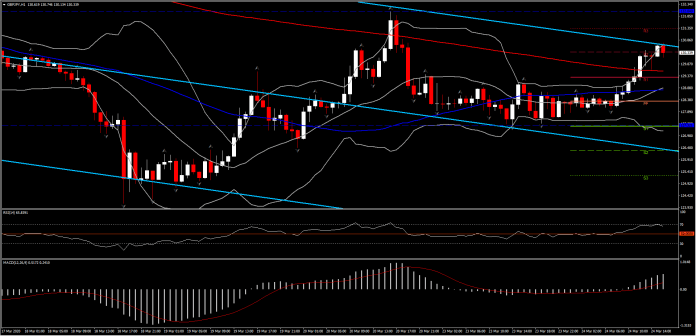The UK was the latest major country to announce a strict lockdown and while many governments have now adopted measures that encourage companies to keep on staff by subsidising pay during the time of restricted activity, there is still less support for self-employed and freelancers and markets are still waiting for a co-ordinated move from Eurozone officials.
Today’s the UK’s preliminary March composite PMI hit a series record low (since January 1998) of 37.1 in the headline reading, having plummeted from 53.0 in February. The manufacturing PMI fell to 48.0 from 51.7 while the services PMI haemorrhage to a 35.7 reading from 53.2 in the month prior.
The data obviously reflects the impact of the coronavirus, having being compiled between 12-20 March, though precedes the nation’s closure of cafes, pubs, restaurants, clubs, concerts etc, and the nation going lockdown, which started yesterday evening. The steepness of the month-on-month decline surpasses that seen even following the collapse of Lehman Brothers in 2008, which marked the start of a global financial crisis. The prior series low in the composite PMI was 98.1, which was seen in November 2008, two months after Lehmans fell.
The main takeaways are clear: the economy is already in sharp contraction, and that worse is to come. A deep recession is inevitable, the key and as yet unanswerable question being how low it persists. Like other countries, the UK government has announced an aggressive stimulus package to counter the impact of virus-containing measures. The UK’s one is billed as a “employment retention” coronavirus support package, which was detailed last Friday and which aims to keep the economy primed for a V-shaped rebound by paying up to 80% of employees pay in businesses that have been forced to suspend trade. No matter how big the stimulus, there won’t be much scope for recovery until people can go back to work.
Today, Sterling is the strongest currency out of the main units, presently within a few pips of its highs and showing a 1.7% gain versus both the Dollar and Yen, and a 0.9% advance on the Euro.
The UK currency had been trading similar to a commodity currency lately, significantly underperforming its major-currency peers during phases of acute risk-off positioning, so it shouldn’t be too surprising to see the pound outperform during the rebounds. Cable has printed a high at 1.1790, which is up by nearly 4 big figures from the 35-year low that was seen on Friday at 1.1409. The pairing is still showing a whopping 11.4% decline on the year-to-date.
The GBP proved to be vulnerable during the recent phases of acute risk-off positioning. Additionally, to the above, the UK runs a relatively big current account deficit, particularly the part of it derived from foreign investors in UK assets, which dwarfs UK investors foreign investments and sets up an imbalance when it comes to capital repatriation. This could exposes the currency during heightened risk aversion.
Then there is Brexit — with Boris Johnson’s government still aiming to take the UK out of its special transition membership of the EU’s customs union and single market at the end of the year, which would put a large part of UK trade on less favourable WTO terms (we think Johnson will ultimately opt for an extension in the transition period).
The BoE’s Monetary Policy Committee meets on Wednesday and Thursday, when it will release the minutes from last week’s decision to cut the repo to 0.1% and expand QE.
Disclaimer: Nothing in this communication contains, or should be considered as containing, an investment advice or an investment recommendation or a solicitation for the purpose of purchase or sale of any financial instrument.
Recommended Content
Editors’ Picks
EUR/USD climbs to 10-day highs above 1.0700

EUR/USD gained traction and rose to its highest level in over a week above 1.0700 in the American session on Tuesday. The renewed US Dollar weakness following the disappointing PMI data helps the pair stretch higher.
GBP/USD extends recovery beyond 1.2400 on broad USD weakness

GBP/USD gathered bullish momentum and extended its daily rebound toward 1.2450 in the second half of the day. The US Dollar came under heavy selling pressure after weaker-than-forecast PMI data and fueled the pair's rally.
Gold rebounds to $2,320 as US yields turn south

Gold reversed its direction and rose to the $2,320 area, erasing a large portion of its daily losses in the process. The benchmark 10-year US Treasury bond yield stays in the red below 4.6% following the weak US PMI data and supports XAU/USD.
Here’s why Ondo price hit new ATH amid bearish market outlook Premium

Ondo price shows no signs of slowing down after setting up an all-time high (ATH) at $1.05 on March 31. This development is likely to be followed by a correction and ATH but not necessarily in that order.
Germany’s economic come back

Germany is the sick man of Europe no more. Thanks to its service sector, it now appears that it will exit recession, and the economic future could be bright. The PMI data for April surprised on the upside for Germany, led by the service sector.
